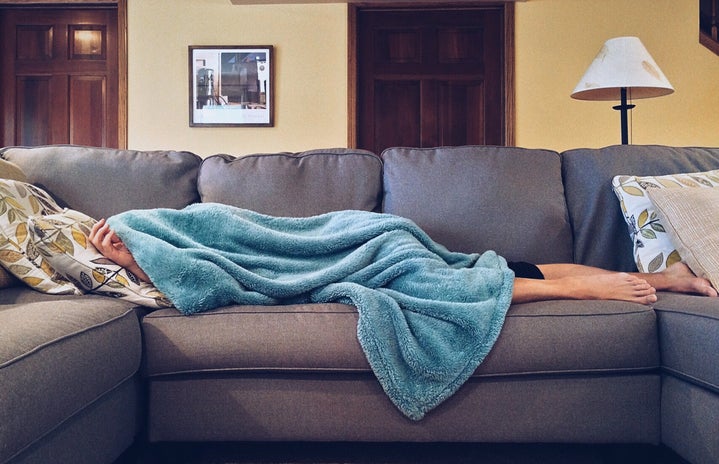Early sunsets that you’re usually too busy to watch, snow turning into slush then back into snow, chilly temperatures with icy roads, and dark skies by 5 p.m. Paradise, right? There is a phenomenon behind the limited amount of sunlight that we experience from around November to early February. It is known as Solar Winter, or the quarter of the year with the least amount of daylight in the Northern Hemisphere, according to AccuWeather.com. There is a light at the end of the tunnel, as we are close to reaching the end of February.
Some people can tell when the darkest days are arriving due to a turn in their mental health. Many people are familiar with that feeling during winter; it’s cold outside, so you don’t want to leave your apartment or dorm room, there’s nothing to do besides study or watch TV, and you end up spending all day in bed, wishing you had a better way to spend your time. I phrase this as a “bed rot” day, which can be immensely productive and restorative when it’s a bi-monthly activity.
“Many people feel ‘down’ or have the ‘winter blues’ when the days get shorter in the fall and winter and feel better in the spring when longer daylight hours return,” the National Institute of Mental Health website explains.
If winter blues continue for so long that they start to affect the way you behave, think, or feel, it could be a sign that you are experiencing Seasonal Affective Disorder.
“SAD is a type of depression characterized by a recurrent seasonal pattern, with symptoms lasting about 4-5 months out of the year,” the NIMH website says. “The signs and symptoms of SAD include those associated with depression as well as disorder-specific symptoms.”
Common depression symptoms include, but are not limited to: feelings of guilt, worthlessness, or helplessness; persistent sad, anxious, or “empty” moods most of the day, nearly every day, for at least two weeks; loss of interest or pleasure in activities, etc. Symptoms that are exclusive to winter-pattern SAD include oversleeping, overeating, and social withdrawal.
In trying to pinpoint the causes of winter-pattern Seasonal Affective Disorder, NIMH has looked into the chemical components in the brain.
“Studies indicate that people with SAD, especially winter-pattern SAD, have reduced levels of the brain chemical serotonin, which helps regulate mood,” NIMH says. “Research also suggests that sunlight affects levels of molecules that help maintain normal serotonin levels”
Despite there not being a lot of study-specific research on this disorder, there are ways to combat it and keep the serotonin rolling into the darker months with you. Experts suggest things like light therapy, or supplements such as Vitamin D.
Light therapy is something I made an attempt to get into, but never fully utilized. The concept is to use a device that emits a specific intensity of light (10,000 lux) to sit in front of for 30-45 minutes per day. The light should be much brighter than any source of normal light inside, and it will usually say that it is intended to be utilized for light therapy. NIMH advises that individuals that take certain medications that cause sensitivity to light or have certain eye diseases should consult their medical professionals before trying light therapy.
Incorporating a few minutes of physical activity into your daily routine can also be beneficial in ensuring that endorphin levels remain high during the darker months. My favorite exercise is yoga, which can be tailored to all levels of fitness. A good YouTuber to look into for beginner’s yoga is YogaWithAdrienne. She posts free yoga sessions and almost always starts a new one during the month of January. She has videos demonstrating practices that people with all levels of ability can participate in. Physical activity is research proven to be effective as well!
“Exercise can help release beneficial hormones in our brains and nervous systems called endorphins,” the Philadelphia College of Osteopathic Medicine website says. “Endorphins have helpful physiological effects on our minds and bodies.”
When feeling any specific emotion, allow yourself to embrace it in its entirety without shame or guilt. To be able to detect when something is not right with oneself, we must accept and validate our true selves with pride and vigor. Even in the summer, it is important to honor ourselves and our needs as much as we are able to. Each one of us is unique with our own gift to bring to the world, and everyone deserves to learn how to treat themselves like a one of a kind, vintage, thrifting find that they cannot live without.


